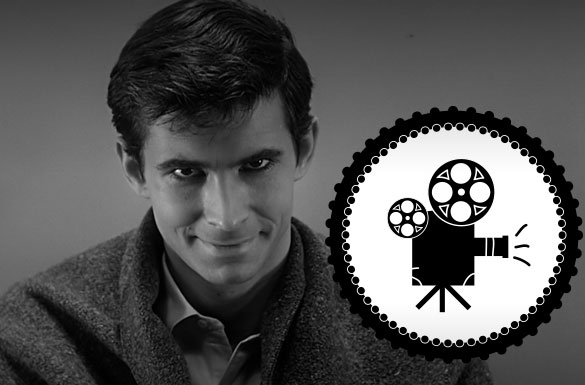April 29th, 1980, the cinema world lost one of its most influential figures in the world of grim and tense storytelling. And since, I believe, that man wouldn’t want to let a good death go to waste, today we’re going to take a look at some of the thrilling mastery of Alfred Hitchcock.
A noted mastermind in the cinema universe, a mere mention of Hitchcock’s works usually evokes the grisly shower scene of his classic Psycho. It’s an eruption of screams, sharp cuts and shrill string instruments (courtesy Bernard Hermann).
And while that vignette of fear and violence is considered one of cinema’s most iconic moments, it’s the scenes that surround it that exemplify what Hitchcock was truly the master of: slow-burning suspense.
Today we’re going to take a look at several scenes where Hitchcock employs camera techniques to create suspense. Some of the clips we’ll be sharing may spoil the plot of their respective movies and, while these films date back to the 40’s, much of their effect is lost if you know what happens, so consider this your SPOILER WARNING.
Close Shot:
Taking another look at Psycho, Hitchcock employs various framing techniques with the close shot to build tension in the dialog between Norman Bates and private investigator Arbogast on the trail of our unfortunate shower victim, Marion Crane (played by Vivian Leigh). The use of this close-up exaggerates the smaller actions and behaviors and emphasizes the feeling of claustrophobia as our investigator closes in on the truth. As Arbogast peruses the guest book, the smallest expressions of doubt, distrust and fear cross the face of Anthony Perkins in his career-defining turn as Norman Bates.
Long-Take: The Entirety of Rope!
One his earlier films, “Rope!” is not often cited as one of the Hitchcock classics. This is often attributed to story concerns, however when it comes to cinematography, “Rope!” does things a bit differently: it starts off with the murder. We see it done, know who does it, and why. It’s how Hitchcock frames the entire piece that makes it so tense: it is one, long shot with no cut aways. While there are some camera tricks employed to change film reels and set pieces, the action and progression of the story plays out in real-time. The continuous unraveling of the plot leave little to no breaks for the viewer, ever present as the drama plays out and stakes get ever higher.
Dolly Zoom/Vertigo Effect/Hitchcock Shot :
The dolly zoom is one of the most influential shots on this list as it was Hitchcock who brought it to the forefront with Vertigo. This shot is performed moving the camera closer to the subject while simultaneous zooming the lens out. It creates a kind of stretching effect as it widens the background. It is often referred to as the “Vertigo Effect” or the “Hitchcock Shot” due to it’s iconic effect in the film.
We’ve only glanced the surface Hitchcock’s rather extensive library so if you’re feeling up to more punishment, we’ve got a few recommendations for you.
- Matt – Strangers on a Train for the implications of “What would you do?”
- David – Notorious for “Claude Reines turn as a somewhat sympathetic Nazi”
- Dan – The Birds for “Just an impressive number of birds”
- Tim – Rebecca as it was his first ‘American’ film
There are plenty more to choose from so take your pick and cozy up tonight to watch a classic suspense artist at work.
Always make the audience suffer as much as possible. – Alfred Hitchcock

